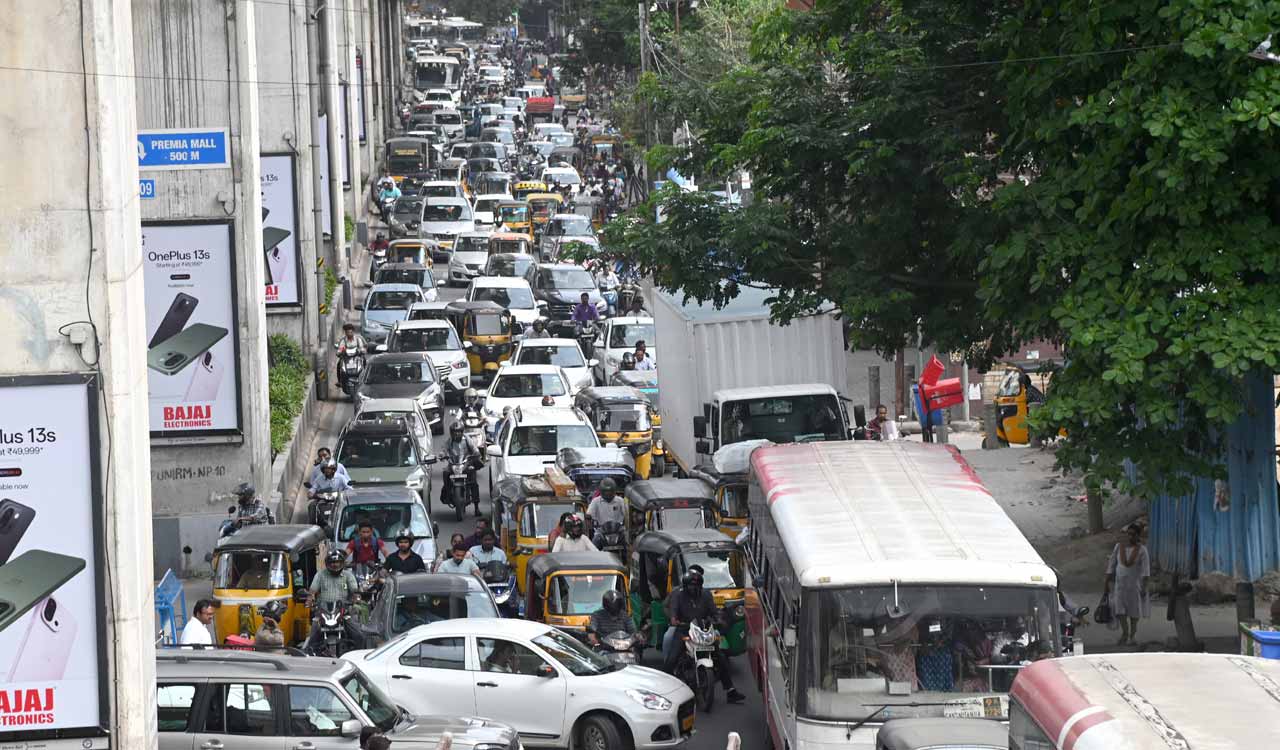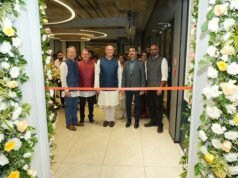Cyberabad, Hyderabad’s key IT and business region, is facing major traffic problems due to rapid development and too many vehicles. Long delays, jams, and poor infrastructure are affecting daily life. Authorities are working on solutions like metro, buses, and road redesigns
Published Date – 7 October 2025, 04:57 PM

Hyderabad: The Cyberabad region, which covers the western stretches of Hyderabad, has rapidly evolved into India’s leading IT and business hub, bringing development and prosperity. But along with it have come severe traffic headaches.
Home to Hitec City, Gachibowli, the Financial District, Miyapur, and crucial links along the Outer Ring Road (ORR), the region faces mounting traffic pressure due to rapid urban expansion and a surge in private vehicle ownership.
Once touted as Hyderabad’s futuristic IT corridor, Cyberabad is now increasingly grappling with gridlock, long commutes, and infrastructure stress.
According to the GHMC and RTA data, Greater Hyderabad has registered nearly 80–90 lakh vehicles, with 2,000–3,000 more hitting the roads every day in 2025. A significant share of this growth comes from Cyberabad, where tech companies, residential clusters, and commercial hubs fuel a boom in two-wheelers and private cars, straining arterial routes.
Bottlenecks are routine across the Hitec City–Gachibowli corridor, ORR interchanges at Financial District and Kokapet, and the Miyapur–Kukatpally stretches. Office junctions and shopping clusters clog up during peak hours, while sudden downpours add to the misery with waterlogging turning traffic into multi-hour standstills.
“Reaching office or returning home itself feels like a project. A 30–45 minute drive often stretches beyond an hour during peak hours,” said Fatima, an IT professional from Chikkadpally.
Keerthi, an employee from Secunderabad working in Nanakramguda, points out that daily traffic jams were not just an inconvenience. “They affect health, time with family and also productivity,” she quips.
Cab drivers, too, are under strain. “For us, time is money. Getting stuck in traffic jams means fewer trips and more fuel burned. Smooth traffic flow would benefit everyone,” said a Secunderabad-based cab driver.
To ease the pressure, Cyberabad Traffic Police and GHMC are experimenting with diversions, manual regulation at choke points, and peak-hour advisories. “We hope rerouting near IT parks will help streamline flow and reduce accidents,” said Cyberabad Joint Commissioner (Traffic) Gajarao Bhupal.
The Cyberabad Police, along with the Society for Cyberabad Security Council (SCSC), are also focusing on road widening, removal of bottlenecks, and shifting of utilities to smooth traffic.
“Traffic in Cyberabad is a growing challenge, but with coordinated efforts like better traffic management, tech-driven solutions, and responsible commuter behaviour, we can ease congestion and make our roads safer and more efficient for everyone,” said Naved, CEO, SCSC.
Santhana Selvan, an IT professional who advocates for pedestrian and cycle-friendly roads in the city, says encouraging staggered office timings, safe school zones, carpooling incentives and employer-supported mobility could help the situation.
“Overall, promoting proactively ‘Active Mobility’, which includes walking, cycling, and public transportation in combination, will surely improve the whole situation,” he said.
Smart Mobility
*Metro extensions to IT and residential zones
*Dedicated bus rapid transit and last-mile solutions
*Redesign of overburdened ORR interchanges
*Diversions, signal retiming, stricter enforcement at accident-prone stretches
*New pedestrian facilities are under planning and tendering
*TGSRTC buses in IT corridor: 450 (200 electric)
*New EV buses to be added: 275
*Bus occupancy in IT corridor: 25 per cent
*Metro usage: 3–4 per cent
*Peak hours: 8–11 am and 5–8 pm
*Nearly 9 lakh software employees in the IT/ITES sector in Hyderabad
*Over 1,500 companies across major hubs like Hitech City, Financial District, Madhapur and surroundings






